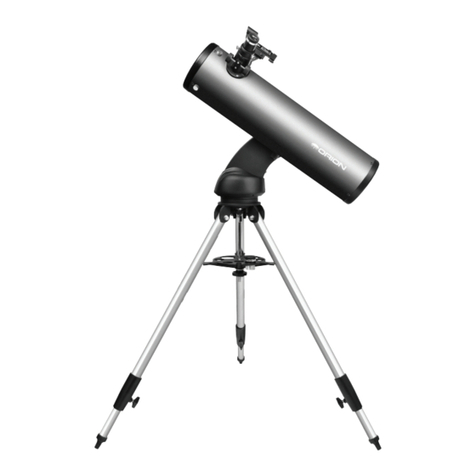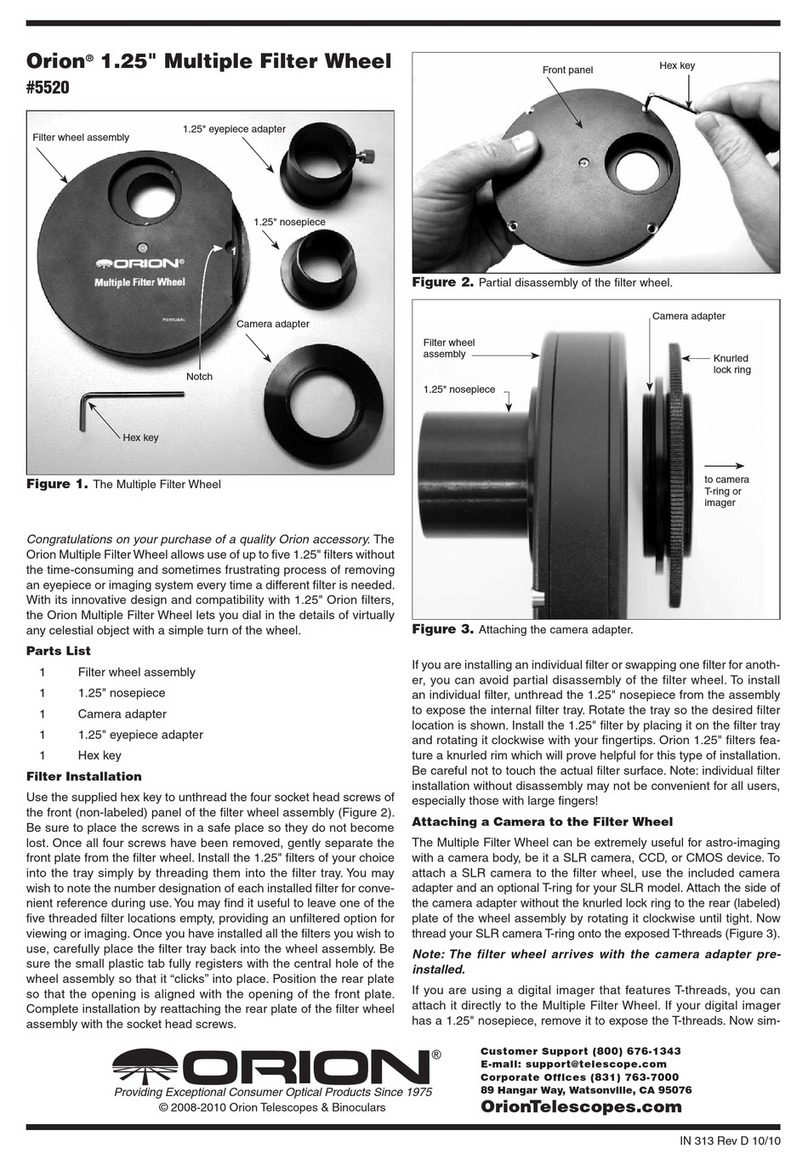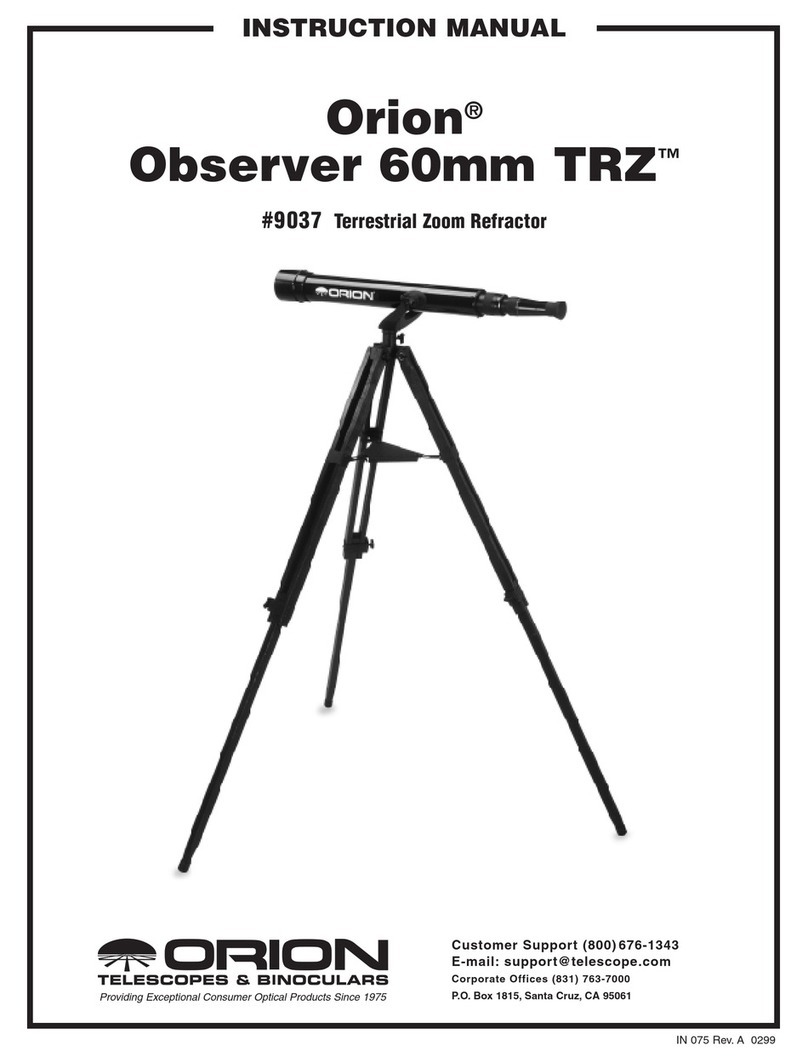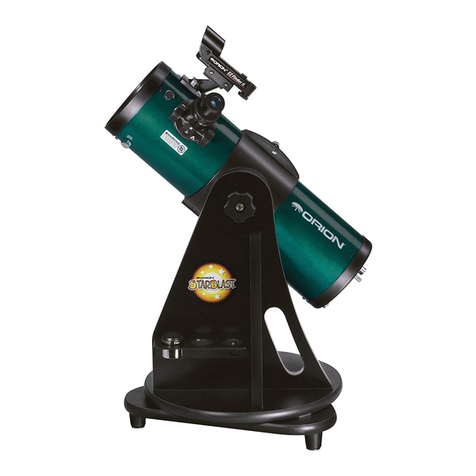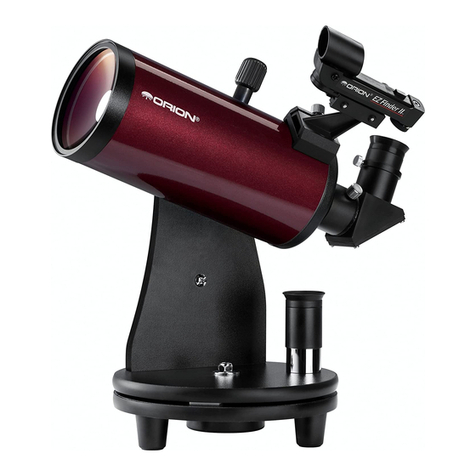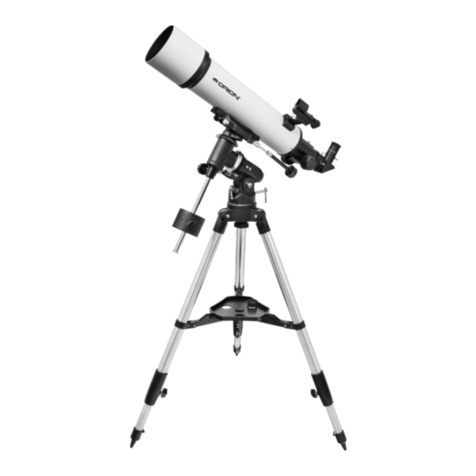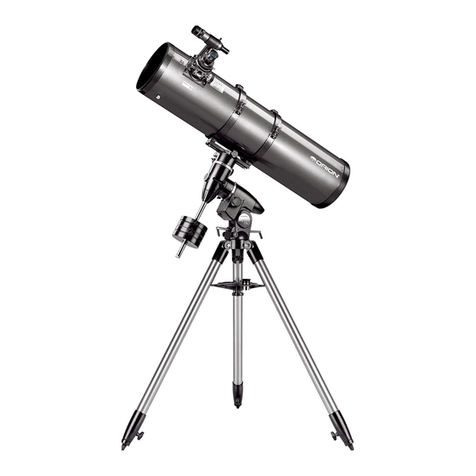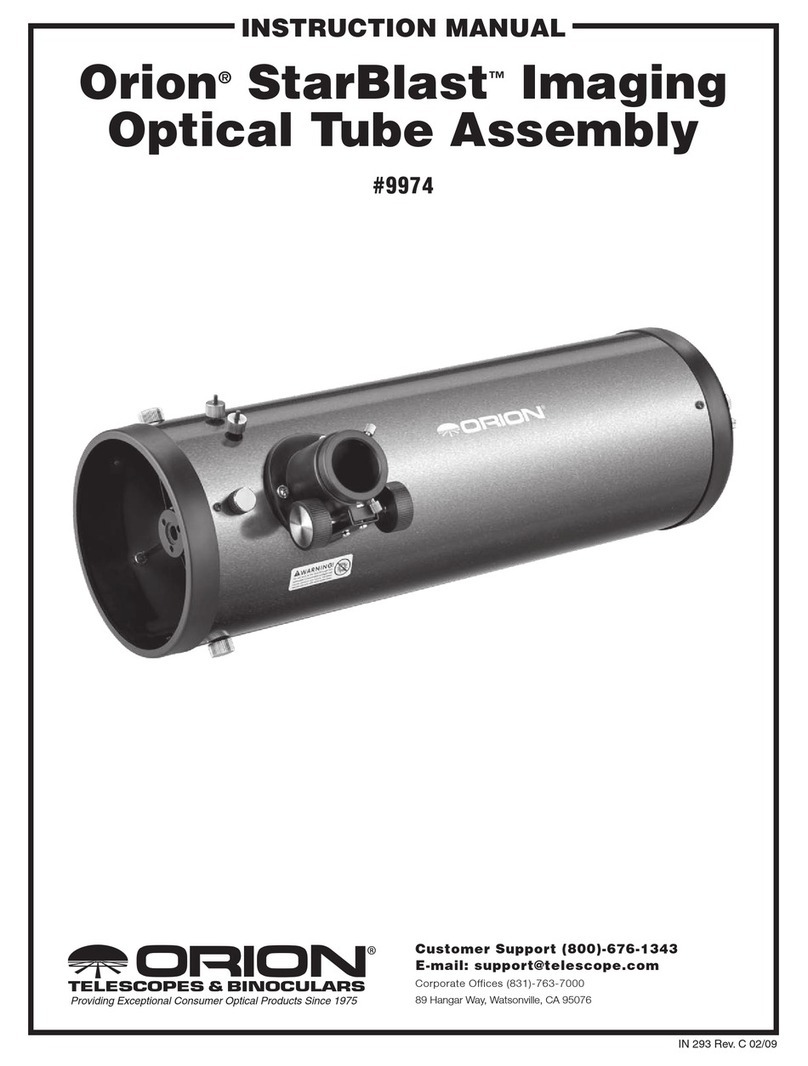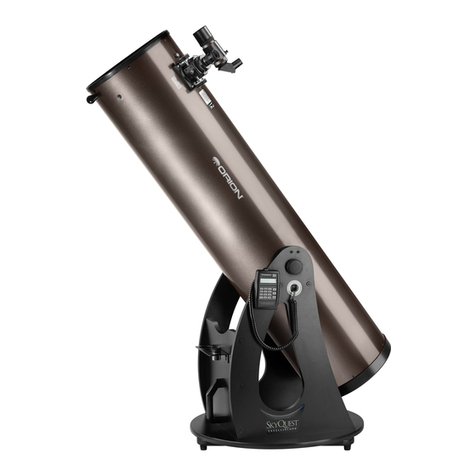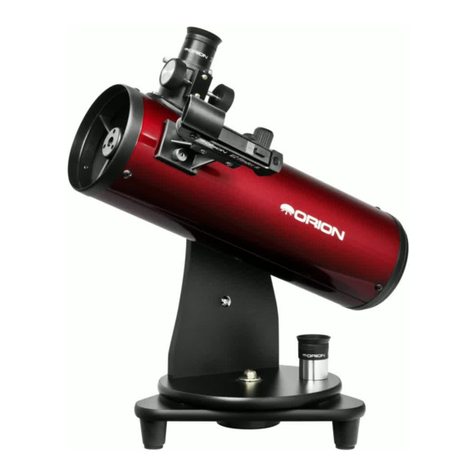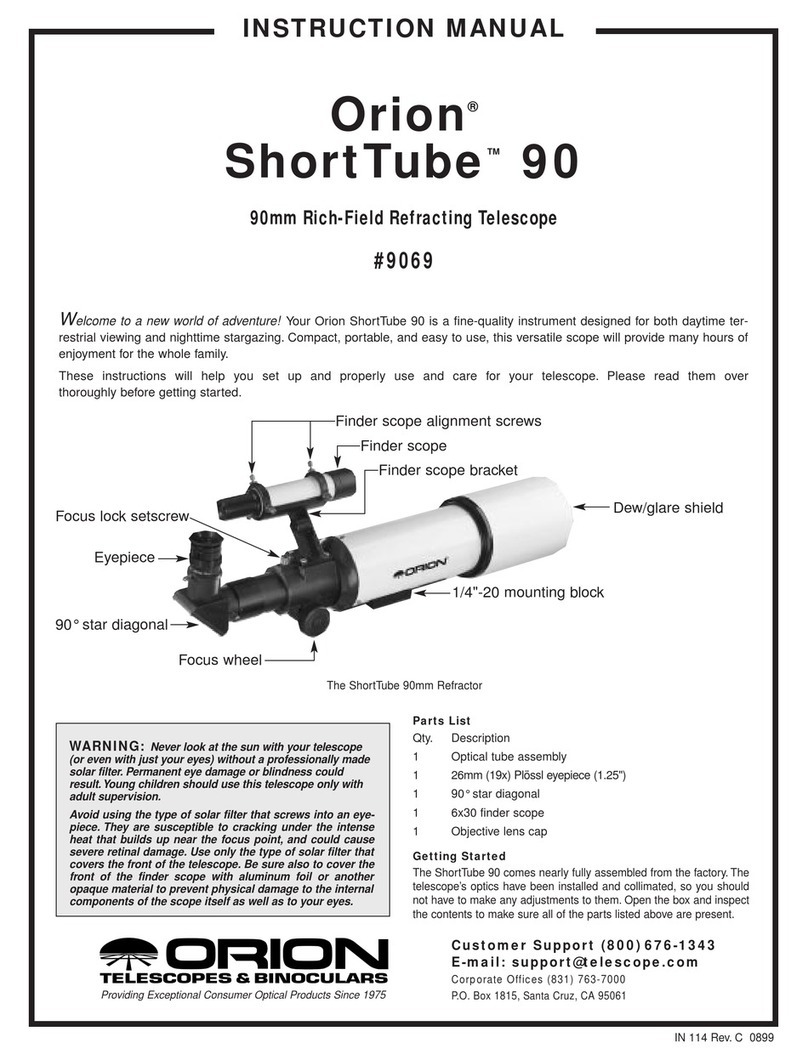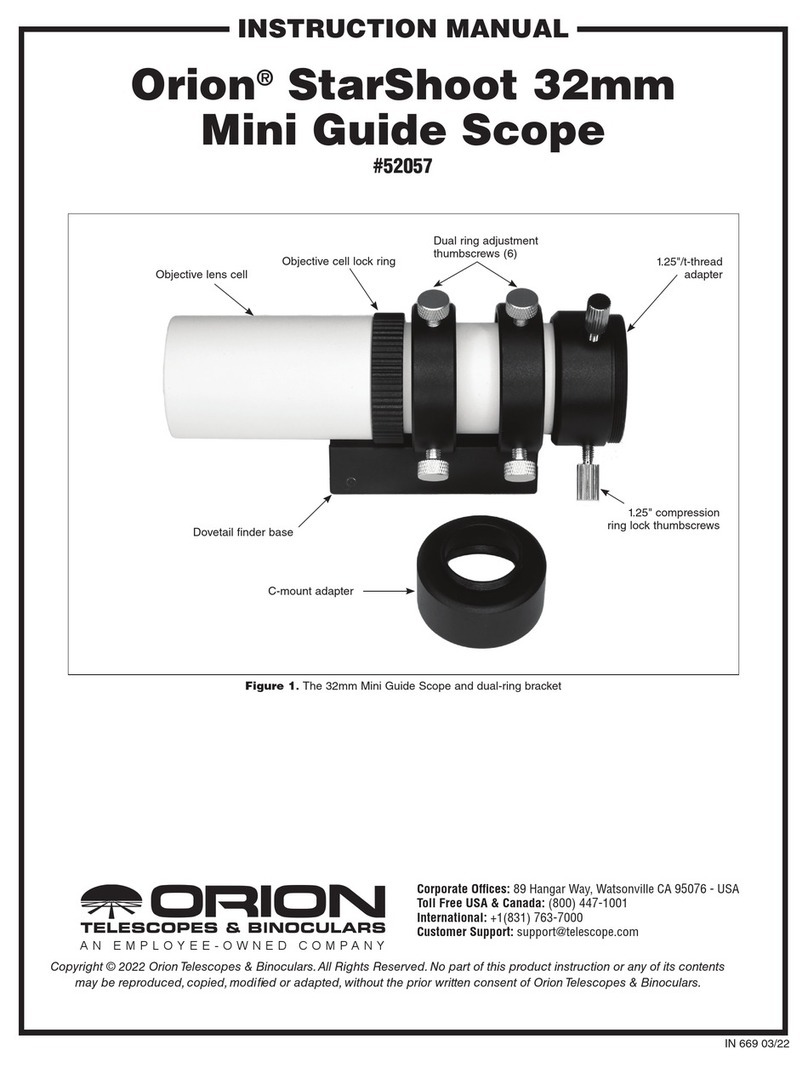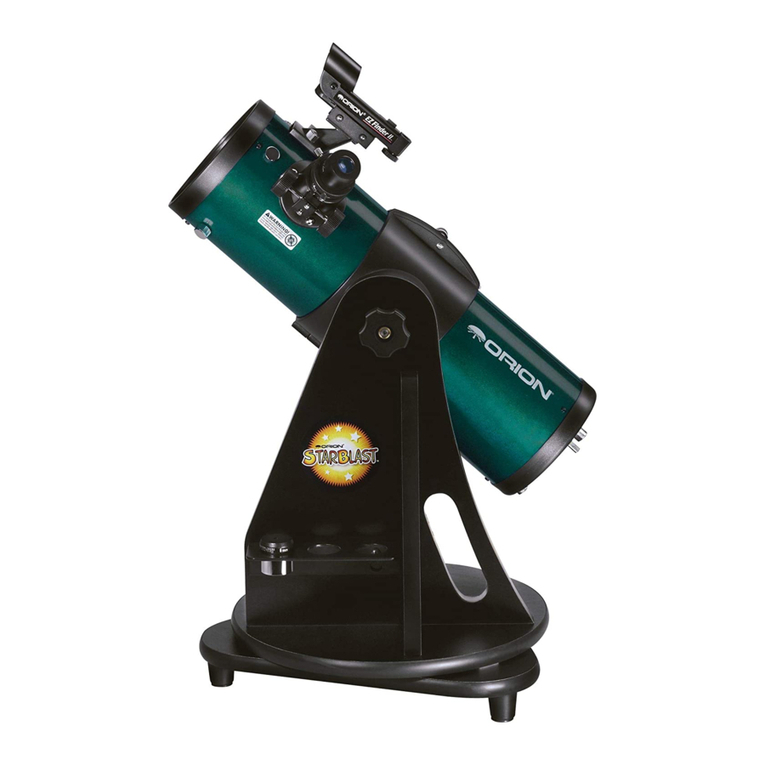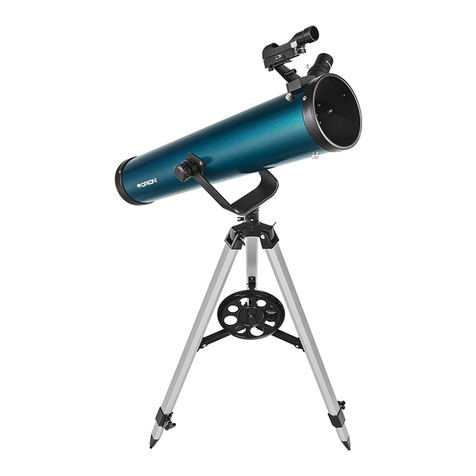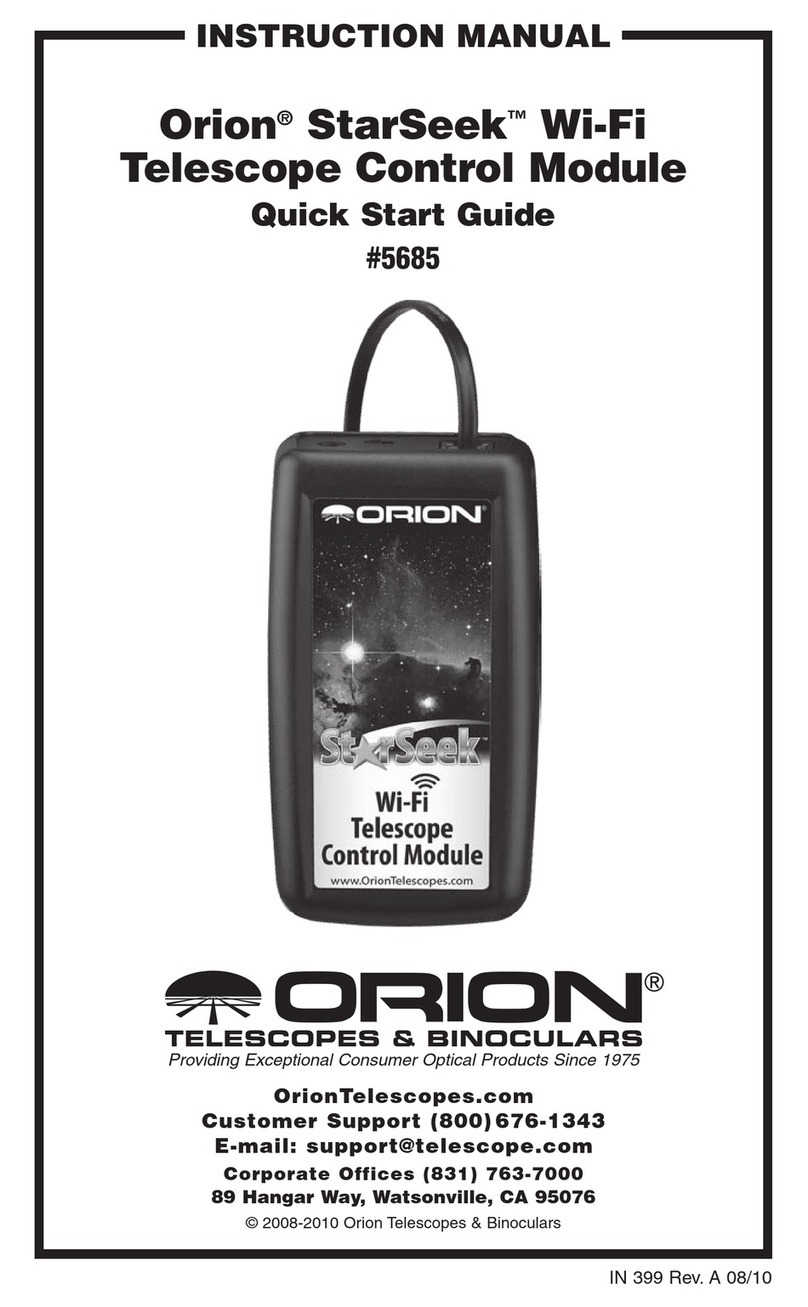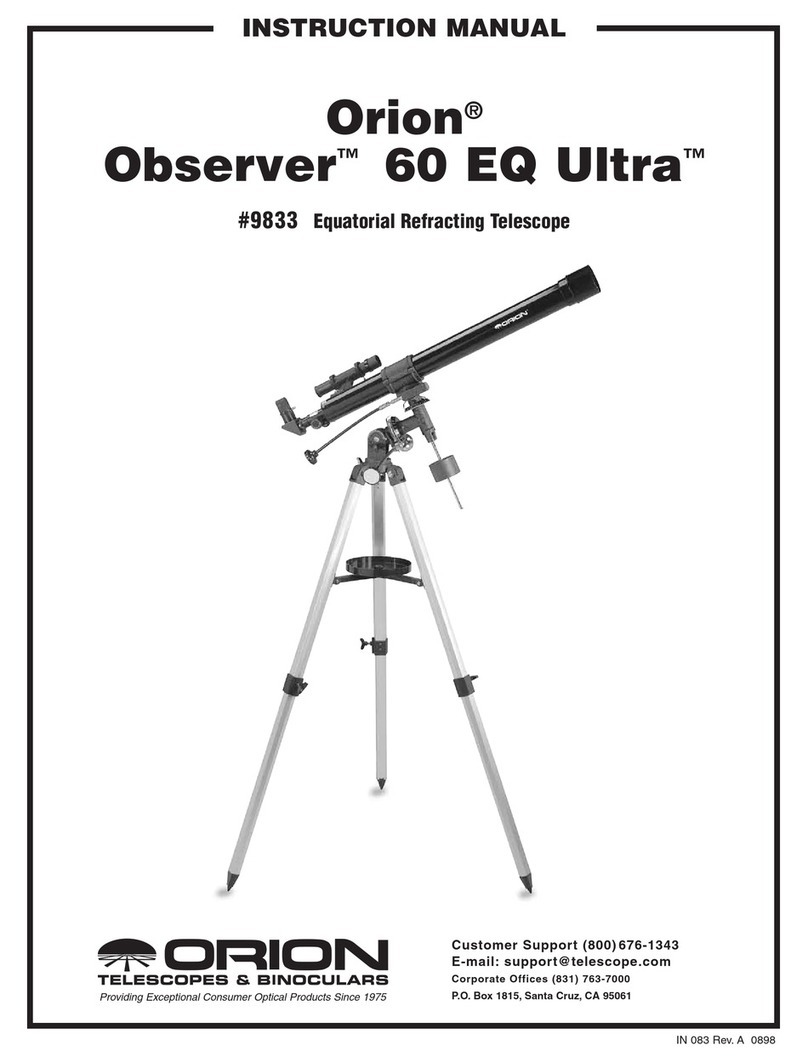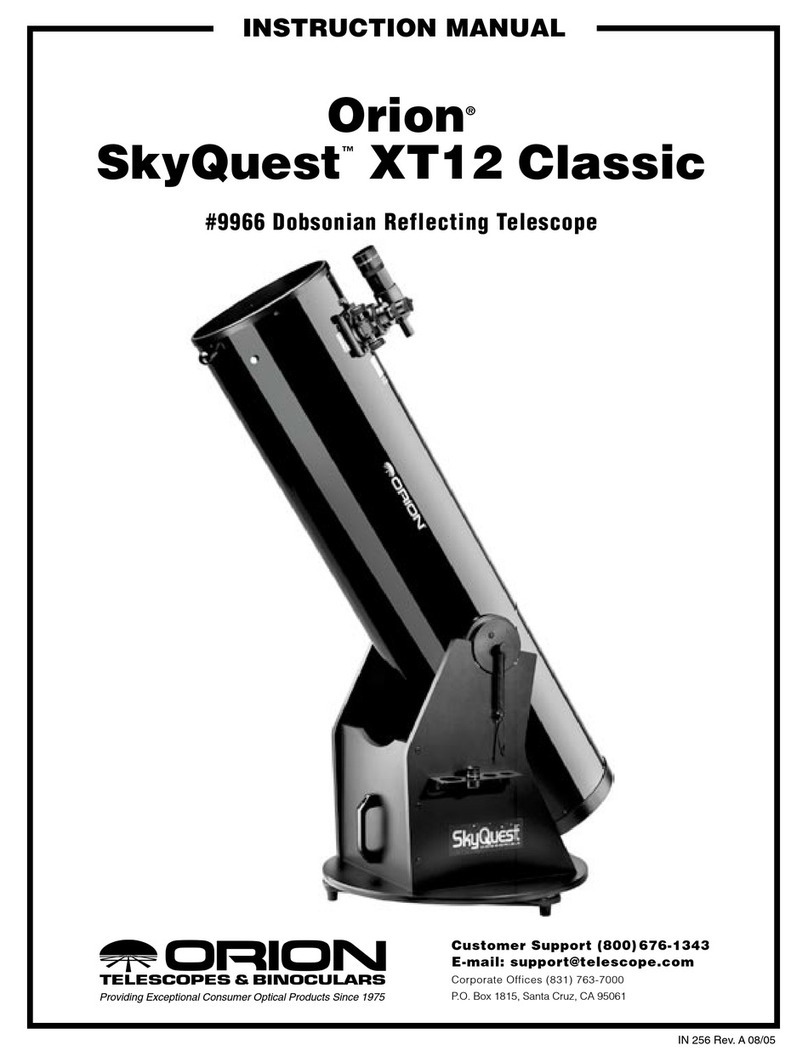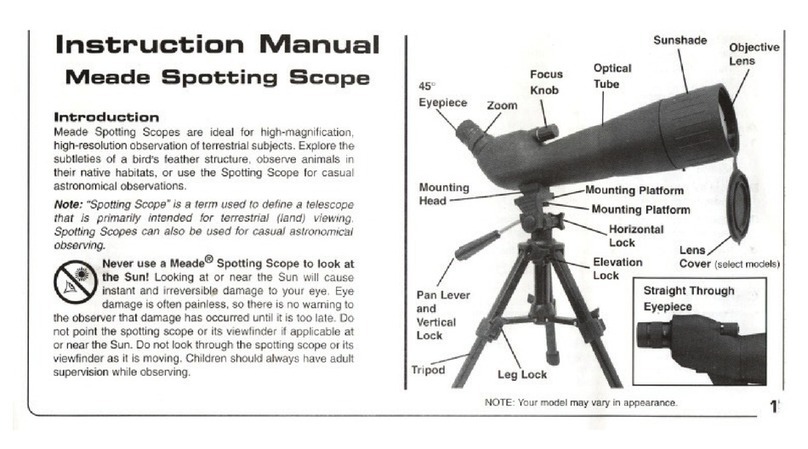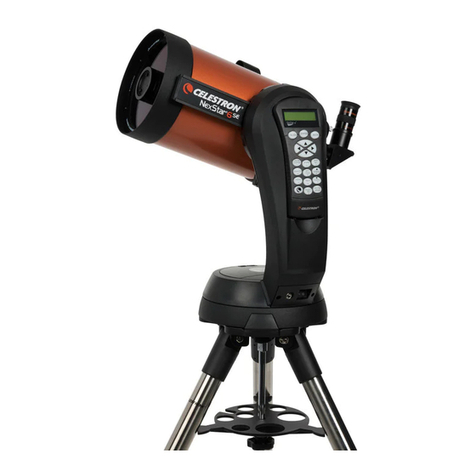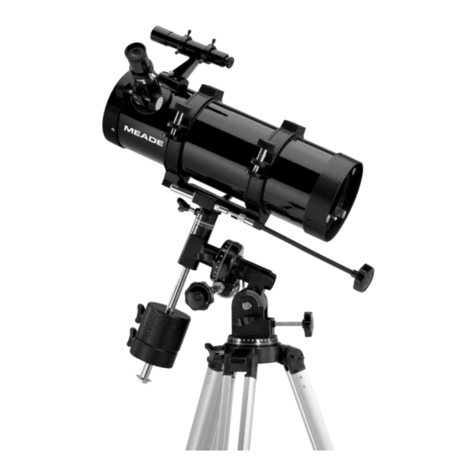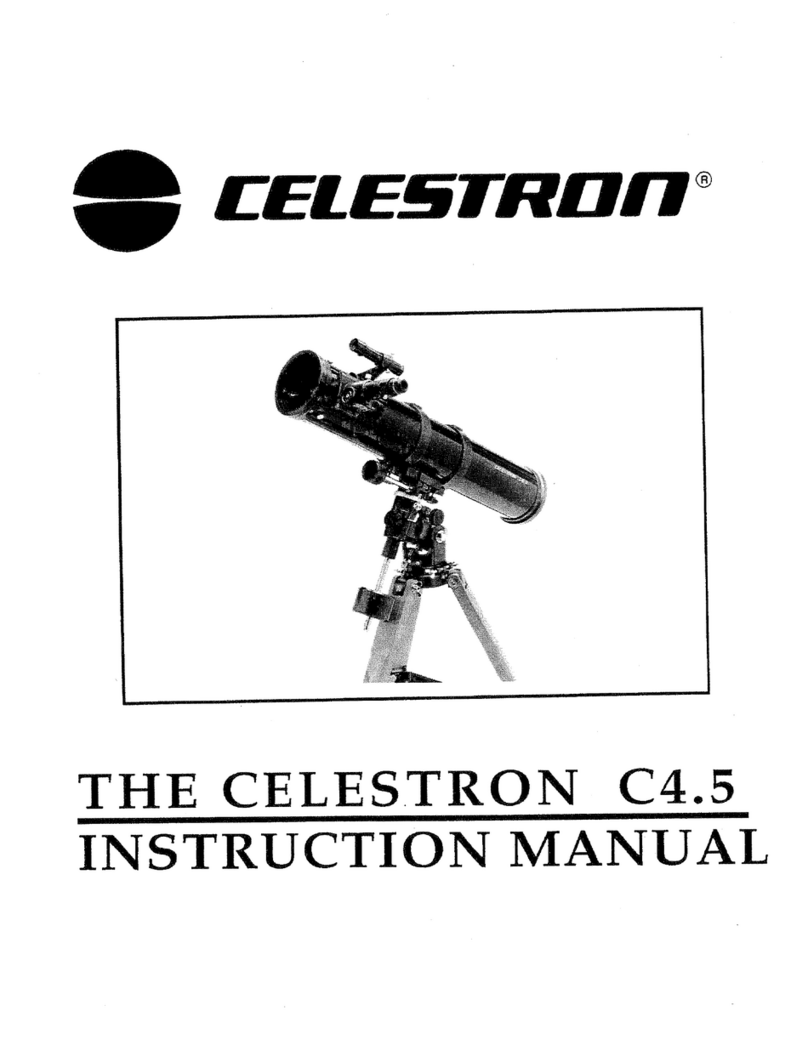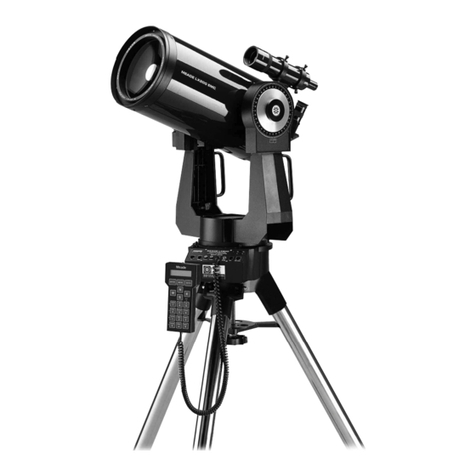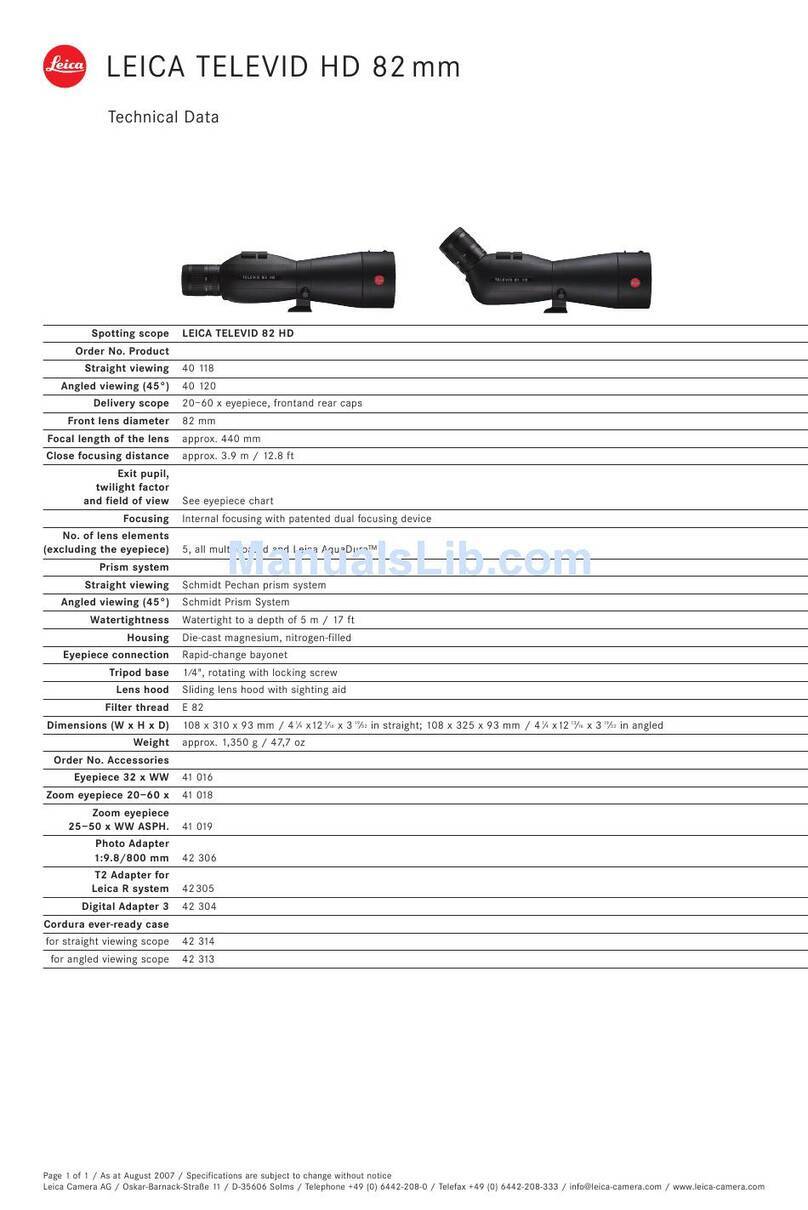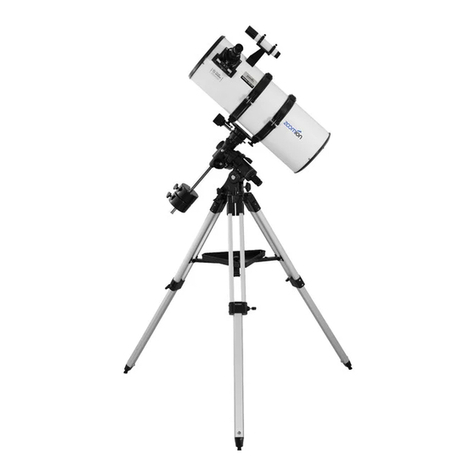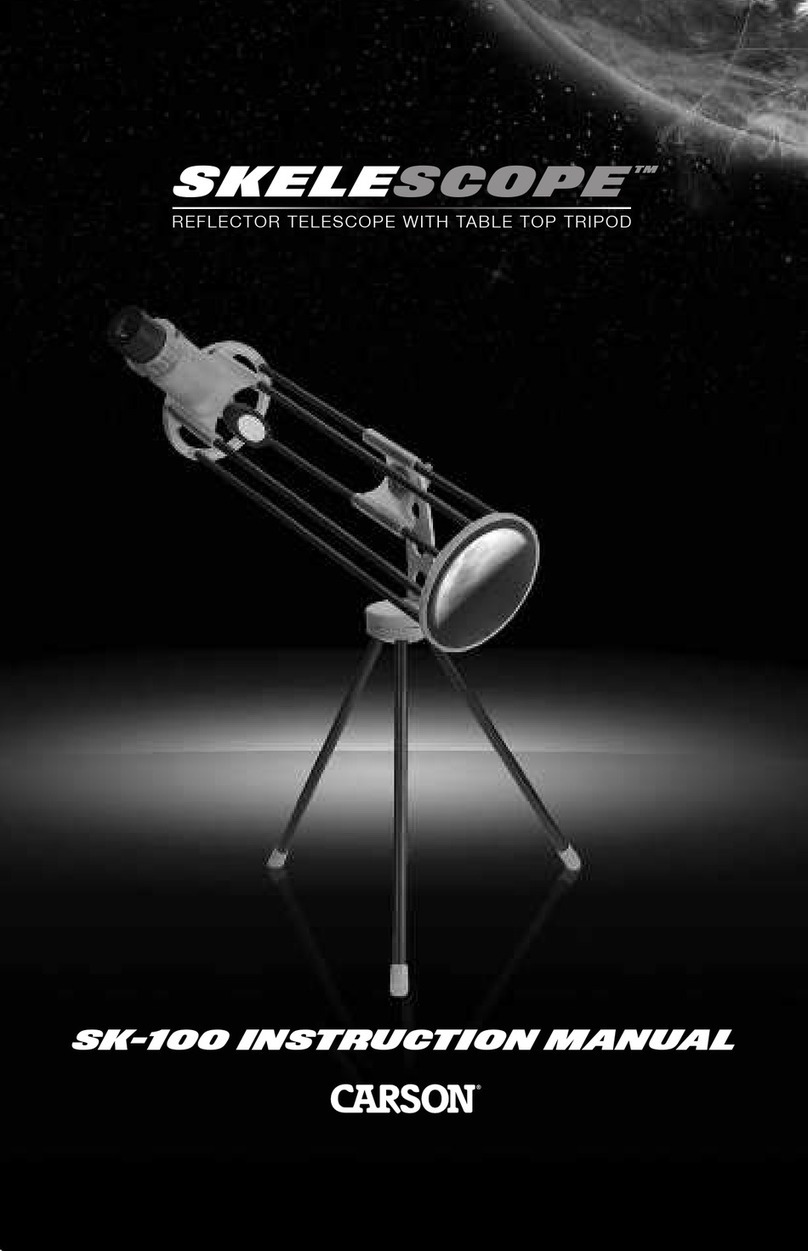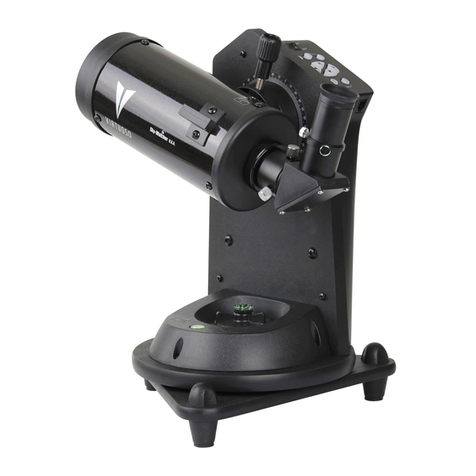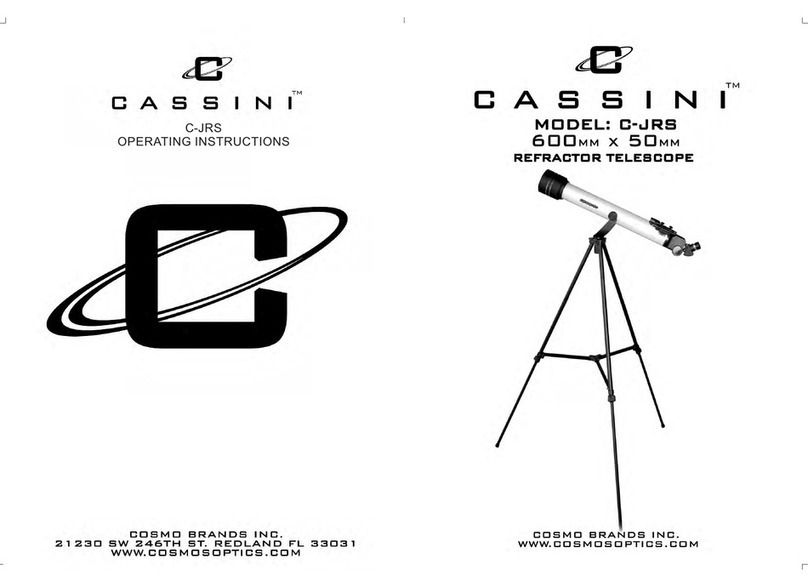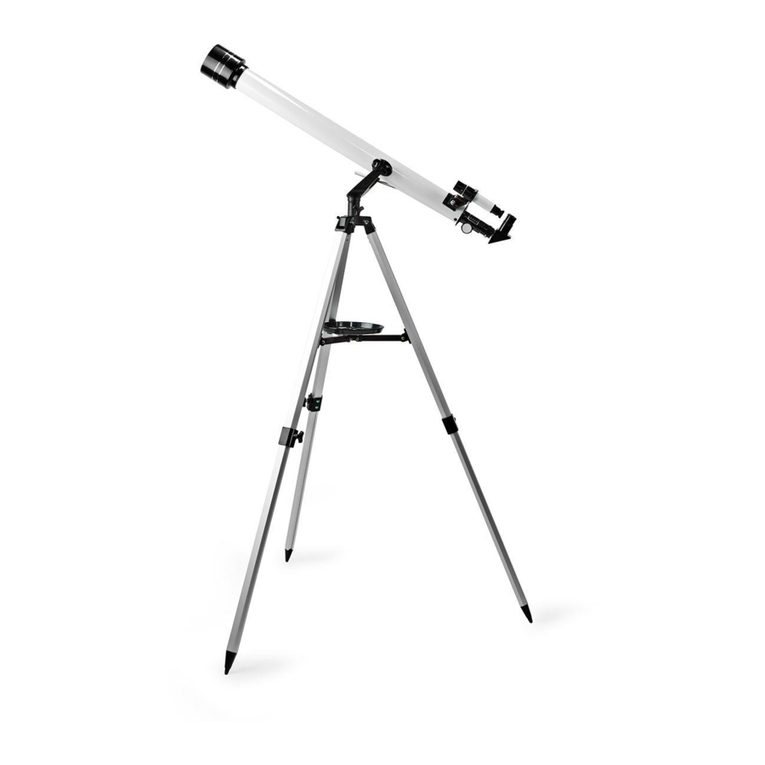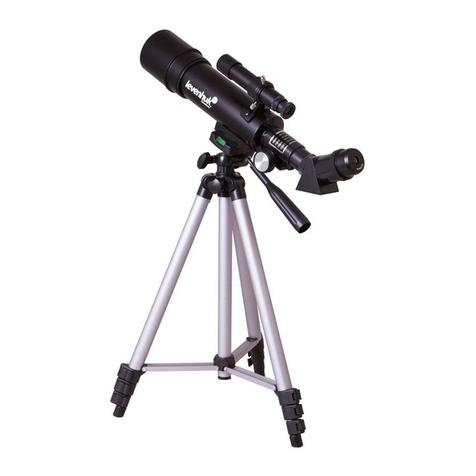
4. Assembly
Assembling the telescope for the first time should take about
30 minutes. The only tools you will need are a Phillips head
screwdriver and a flat head screwdriver. As a general note,
tighten all screws securely to eliminate flexing and wobbling,
but be careful not to over-tighten and thereby strip the threads.
Refer to Figures 1 through 4 during the assembly process.
During assembly (and any other time, for that matter), do not
touch the surfaces of the telescope objective lens or the lens-
es of the reflex sight and eyepieces with your fingers. These
optical surfaces have delicate coatings that can easily be
damaged if touched. Never remove any lens assembly from
its housing for any reason, or the product warranty will be
voided.
Begin set-up of the telescope by assembling the tripod and
mount first:
1. Lay the altazimuth yoke mount (5) on its side. Attach the
tripod legs (6), one at a time, to the base of the mount by
sliding a tripod leg attachment screw (21) through the top
of a leg and through the holes in the base of the mount.
The washers should be on the outside of the tripod legs.
Secure the wing nuts finger-tight. Figure 3b shows a close-
up detail of the screws attaching the tripod legs to the
altazimuth mount.
2. Install and tighten the leg lock knobs (23) on the bottom
braces of the tripod legs (6). For now, keep the legs at their
shortest (fully retracted) length; you can extend them to a
more desirable length later, once the tripod is completely
assembled.
3. Stand the tripod and mount upright and spread the tripod
legs (6) apart as far as they will go, until the accessory tray
bracket (22) is taut. Connect the accessory tray (7) to the
accessory tray bracket (22) with the three wing screws
already installed in the tray. Push the wing screws up
through the holes in the accessory tray bracket and thread
them into the holes in the accessory tray.
4. Tighten the tripod leg attachment screws (21) at the tops
of the tripod legs so the legs are securely fastened to the
mount. Use the Phillips head screwdriver and/or your fin-
gers to do this.
5. Attach the altitude micro-motion rod and thumbwheel (13)
to the optical tube (1) by first removing the flat-head screw
from the micro-motion rod attachment post (12) on the
side of the optical tube. Slide the screw through the hole at
the end of the micro-motion rod and rethread the screw
into the attachment post. Make sure the screw is tight-
ened.
The tripod is now completely assembled and the altazimuth
yoke mount is ready for the installation of the optical tube:
6. To install the optical tube (1) in the altazimuth yoke mount
(5), first slide the altitude micro-motion control rod into its
receptacle, at the same location as the altitude lock knob
(19)) on the side of the yoke. (Figure 4). Then, with the rod
in place in the receptacle, gently drop the optical tube into
the yoke so that the holes in the altitude castings (10) on
the side of the optical tube line up with the holes in the top
of the altazimuth yoke mount (5). Slide the yoke knobs
(18) through the holes in the top of the mount and thread
them into the altitude castings on the optical tube. Tighten
the altitude lock knob (19) securely.
7. Unthread the two knurled metal thumbnuts located on the
optical tube (1) and place the holes in the base of the EZ
Finder II mounting bracket (11) over the two threaded
shafts. Then thread the metal thumbnuts back on the
shafts to secure the mounting bracket to the optical tube.
8. Attach the EZ Finder II reflex sight (4) to the EZ Finder II
mounting bracket (11). Loosen the two securing thumb-
screws on the EZ Finder II (Figure 6) and slide it onto the
mounting bracket. Tighten the two securing thumbscrews.
You will align the EZ Finder II later, in the Getting Started
section.
9. Insert the chrome barrel of the 90° mirror star diagonal (2)
into the focuser drawtube (14). See Figure 3. Secure the
star diagonal with the diagonal holder thumbscrews (16).
10. Insert the chrome barrel of the 25mm Explorer II eyepiece
(3) into the 90° mirror star diagonal (2). Secure the eye-
piece in the diagonal with the eyepiece holder thumb-
screws (17). The eyepiece and diagonal properly installed
should resemble Figure 2b.
Your telescope is now fully assembled and should resemble
Figures 1-3.
5. Getting Started
Now that your Observer 70 is assembled, you’re ready to
begin observing. This section will instruct you on using your
telescope effectively.
Altitude and Azimuth (Aiming the Telescope)
The Observer 70 altazimuth mount (5) permits motion along
two axes: altitude (up/down) and azimuth (left/right) (Figure
5). Moving the telescope up/down and right/left is the “natural”
way people aim objects and this makes pointing the telescope
intuitive and easy.
Figure 4. Installing the optical tube in the “yoke” altazimuth mount.
10

